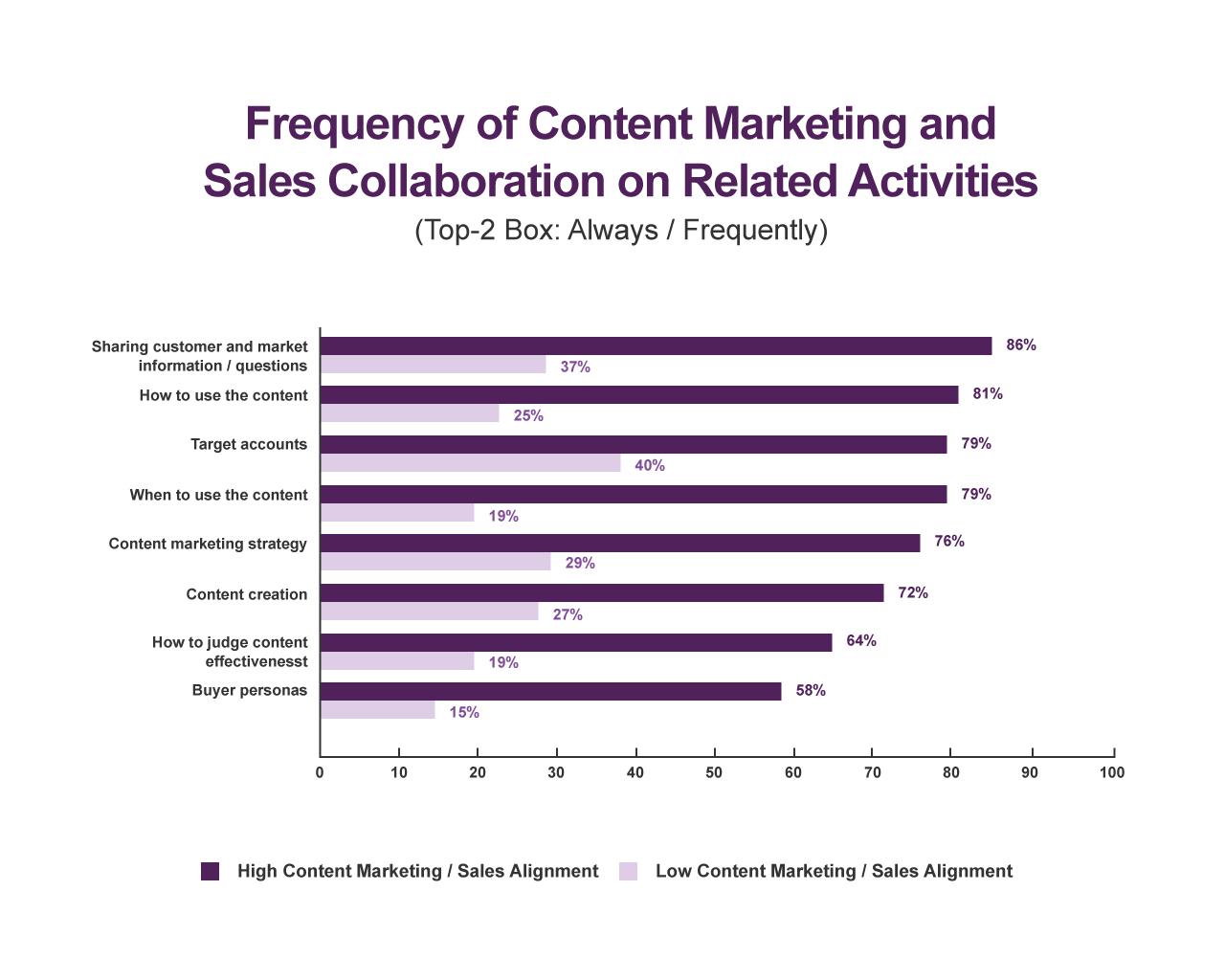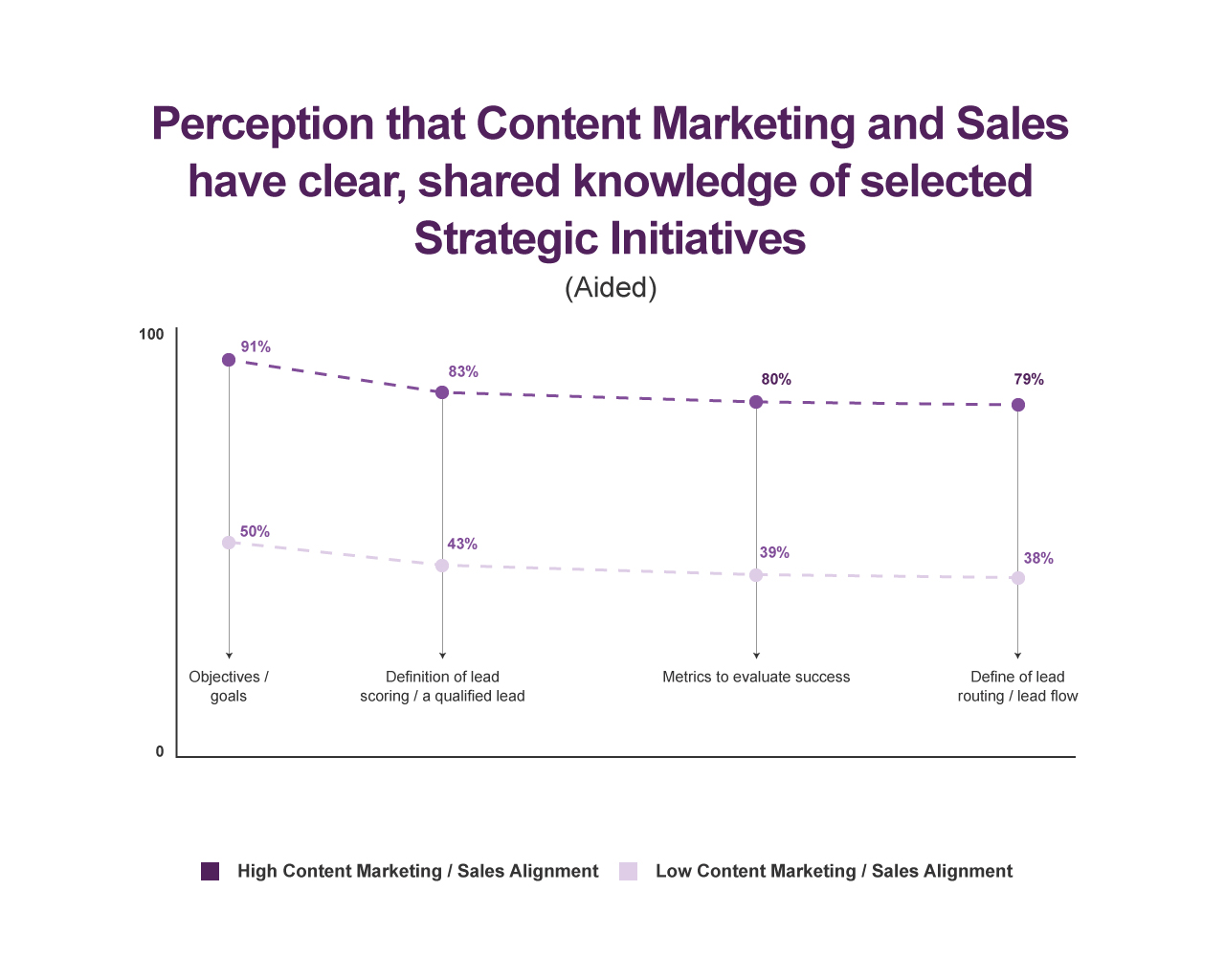Sales and marketing alignment has received its fair share of scrutiny over the years. For sales, marketing simply isn’t producing the right content to help them convert more leads, and the leads they receive are not ready to buy; and for marketing, sales are getting more than enough leads but just isn’t converting them.Needless to say, the relationship between both departments requires a do-over, and research exists which supports the argument that content marketing is how they will make the relationship work. In Content Marketing: Unlocking Sales & Marketing Performance, a research paper produced by the Content Marketing Institute and LinkedIn, a strong case for content marketing and its role as a vehicle for enhancing sales and marketing alignment is made.
When sales and marketing alignment works
The research shows that improved customer experiences, increased ROI for marketing spend, and more sales revenue can be realised. But how is this level of alignment achieved? Highly aligned sales and marketing teams practice certain behaviors which contribute to their success, and here are four practices your organisation can adopt to generate better results too.
Build content that cultivates trust
It’s long been known that B2B buyers gather a lot of information before any decision is made. In most cases, research is conducted before a salesperson becomes involved. Additional research now shows that only 12% of B2B buyers want in-person meetings with sales reps, and that 71% would rather research on their own, engaging a sales rep only when needed.Advice from peers has also become an important factor for B2B buyers because it appears to be more honest than pushy sales messaging, and this is where content produced to build trust goes a long way. B2B buyers have the responsibility of understanding solutions, and often, also presenting them to cross-functional committees.In order to be effective, buyers want transparent information on pricing, technical support and leadership content (think white papers, reports and case studies), as this is more trustworthy and valuable. Highly aligned sales and marketing teams understand the value of producing high-trust content and how to use it to drive meaningful buyer engagements.
Sales knows what content to use and when to use it
For many sales teams, finding the right content to support the different stages of the sales cycle is a challenge, and this is something that highly aligned sales and marketing teams are aware of. They know that producing great content is one half of the battle, the other is ensuring that it’s used at the right time in the sales cycle.

In highly aligned sales and marketing teams, both take time to meet and develop the best ways to have content work for sales. This involves marketing showing sales when a certain piece of content is most powerful, and sales sharing exactly what kinds of questions buyers are asking along the sales cycle.
Collaboration is part of their culture
A common trait of the strained sales and marketing relationship is that very little collaboration exists. In fact, as much as 45% of organisations with low content marketing/sales alignment don’t meet often enough. On the other side of the spectrum, highly aligned sales and marketing teams meet frequently, work from similar databases, share customer and market information, and know how to judge how effective their content is.Highly effective sales and marketing teams see this culture of collaboration as a two-way street and contribute to its growth to generate results, with many teams meeting daily or weekly.

Common goals matter
Smarketing should generate better results, and in some cases, it has by as much as a 20% boost in revenue, but for many organisations the idea of an integrated sales and marketing strategy is very hard to realise. Highly aligned teams, however, have clear shared objectives. They know which initiatives matter, have clear definitions of lead scoring, know which metrics count, and understand how leads transition between marketing and sales.

Conclusion
Developing a highly aligned sales and marketing relationship is possible and can produce tangible results. Organisations looking to increase marketing ROI, enhance the customer experience, and boost revenue should focus on producing content which builds trust, developing a stronger culture of collaboration, and establishing common goals related to content marketing and its role in the business.
If you want to see how you can align your sales and marketing by providing your customers with the right content, register here for a free exclusive demo. We'll show you how you can achieve this using familiar tools your sales and marketing teams are already using.
About this blog
This guest post was originally published in the Qorus blog site. Qorus is a document automation solution that helps people create business critical documents more efficiently and accurately. Leveraging familiar tools in Office 365, it is a powerful business productivity tool that helps non-technical users to create and personalise documents quickly such as RFPs, proposals, contracts, pitches and reports.




